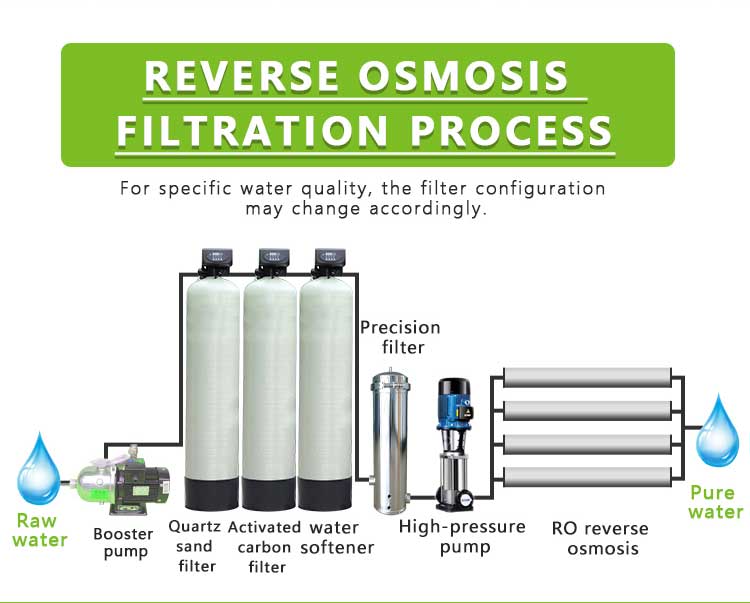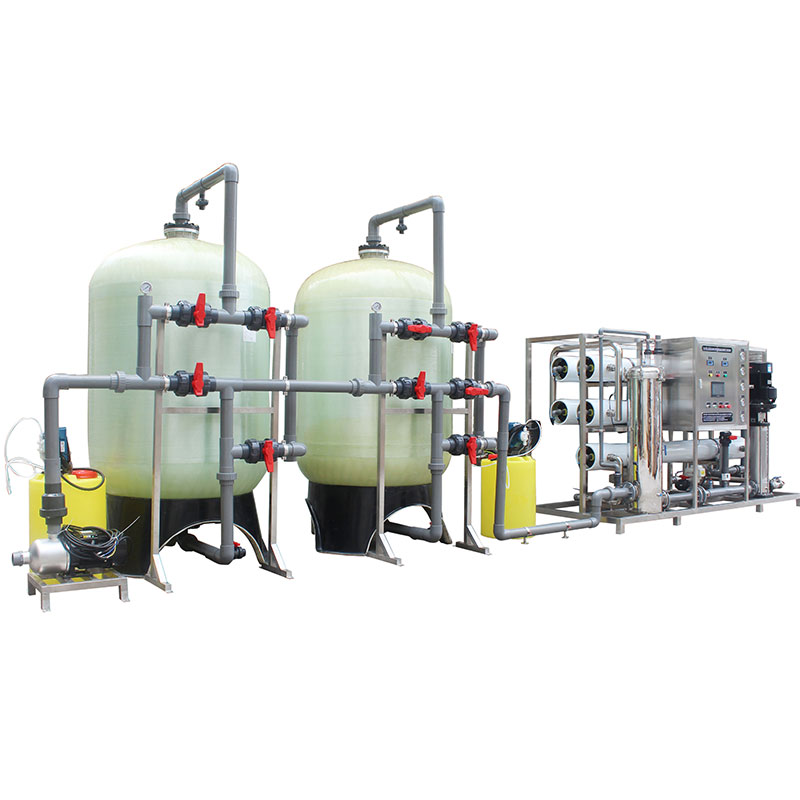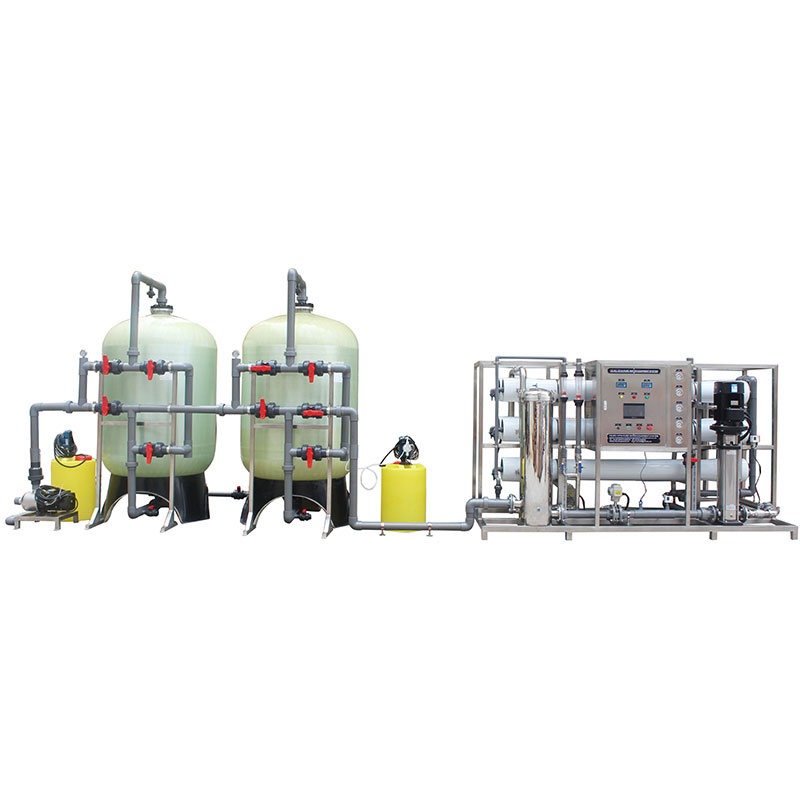What is the best filter to remove plastic from water?
In recent years, plastic pollution has become a global environmental issue. A large amount of plastic waste not only pollutes land and oceans, but also infiltrates into our drinking water. Studies have shown that microplastics and nanoplastic particles are widely present in bottled water, tap water and natural water sources. The potential harm of these tiny plastic particles to human health has attracted widespread attention.
So, how to effectively remove plastic pollutants from water? Which filter is the best choice? This article will explore this issue in depth.

The current status of plastic pollution in water
The main forms of plastic pollution in water include:
● Microplastics: plastic particles with a diameter of less than 5 mm, derived from the decomposition of plastic products, plastic microbeads in cosmetics, etc.
● Nanoplastics: plastic particles with a smaller size, usually less than 100 nanometers, which are difficult to remove by conventional filtering methods.
● Soluble plastic compounds: additives and decomposition products in plastics, such as bisphenol A (BPA), phthalates (Phthalates), etc.
These plastic pollutants not only cause damage to aquatic ecosystems, but may also accumulate through the food chain, posing a potential threat to human health. Given the complexity of plastic pollution, it is particularly important to choose the right water filter.
Common water filtration technologies
1. Particle filtration
Particle filters remove particulate matter, including microplastics, from water through physical barriers. Commonly used particle filter materials include sand, ceramics, fibers, etc.
● Advantages:
Significant effect on removing larger particles
Simple maintenance and low cost
● Disadvantages:
Limited effect on nanoplastics and soluble compounds
2. Activated carbon filtration
Activated carbon filters use the adsorption properties of activated carbon to remove organic compounds and some microplastics from water.
● Advantages:
Strong adsorption capacity, improves the taste and odor of water
Effective on organic pollutants
● Disadvantages:
Not effective on nanoplastics
Filter elements need to be replaced regularly
3. Ultrafiltration (UF)
Ultrafiltration technology uses filter membranes with pore sizes between 0.01 and 0.1 microns to remove bacteria, viruses and tiny particles from water.
● Advantages:
Good removal of microplastics
Retains minerals in water
● Disadvantages:
Not effective for soluble compounds
Requires regular cleaning and replacement of filter membranes
4. Nanofiltration (NF)
Nanofiltration technology effectively removes soluble pollutants and some nanoplastics from water through filter membranes with smaller pore sizes (0.001 to 0.01 microns).
● Advantages:
Removes small molecular organic matter and some nanoplastics
Retains some beneficial minerals
● Disadvantages:
Higher cost
Limited effect on very small nanoplastics
5. Reverse Osmosis (RO)
Reverse osmosis systems use semi-permeable membranes (pore size of about 0.0001 microns) to remove most pollutants from water, including microplastics, nanoplastics, and soluble compounds.
● Advantages:
Removes a wide range of pollutants, including microplastics and nanoplastics
Provides high-purity drinking water
● Disadvantages:
High initial investment and maintenance costs
More water waste
Requires electricity to operate

What is the best filter to remove plastic from water?
Based on its ability to remove plastic pollutants, the reverse osmosis (RO) system is undoubtedly the most effective choice. RO systems remove virtually all plastic particles of all sizes, as well as dissolved compounds, by forcing water through a semi-permeable membrane at high pressure. Here are the specific benefits of reverse osmosis systems:
1. Comprehensive contaminant removal
The pore size of the RO membrane is very small, which can effectively intercept microplastics and nanoplastics, while removing dissolved plastic compounds and other harmful substances such as heavy metals, pesticides, bacteria and viruses. This allows RO systems to provide high-purity drinking water and ensure water safety to the greatest extent.
2. High-efficiency performance
The filtration efficiency of reverse osmosis systems is high, and they can usually remove more than 99% of contaminants. RO systems are an ideal choice for homes and places that require high drinking water quality.
3. Improve the taste of water
By removing chlorine, chloramines and organic matter from water, RO systems can significantly improve the taste and odor of water, making drinking water more refreshing and delicious.
However, although reverse osmosis systems perform well in removing plastic contaminants, there are also some disadvantages that need to be considered:
1. Initial investment and maintenance costs
RO systems have a high initial investment, including equipment purchase and installation costs. In addition, the RO membrane needs to be replaced regularly, and the system needs to be cleaned and maintained, which increases the cost of use.
2. Water waste
The reverse osmosis process produces a certain amount of wastewater, usually about three times the amount of water produced. Although some advanced systems recycle wastewater to reduce waste, this is still an issue that needs to be considered.
3. Energy consumption
RO systems require high-pressure pumps to drive and require electricity support, which may be a limitation in areas with high energy costs or unstable power supply.
Other options for effective filtration technologies
Although reverse osmosis systems perform best in removing plastic pollutants from water, other filtration technologies also have their advantages depending on the specific situation:
1. Ultrafiltration (UF) system
Although the ultrafiltration system has limited effect on nanoplastics, it has a good removal effect on microplastics, while retaining beneficial minerals in the water, which is suitable for families with medium requirements for water quality.
2. Activated carbon filter
Activated carbon filters can be used as pretreatment units for reverse osmosis systems to remove chlorine and organic compounds from water and extend the life of RO membranes. In addition, for scenarios where nanoplastics do not need to be treated, activated carbon filters are an affordable option.
3. Particle filtration and multi-stage filtration system
The multi-stage filtration system combining particle filtration, ultrafiltration, nanofiltration and activated carbon can provide comprehensive water quality assurance, remove a variety of pollutants, and is suitable for places with high requirements for water quality.

Actual application cases
1. Home application
In household drinking water purification, reverse osmosis systems are widely used in kitchens and water dispensers to provide high-quality drinking water. In particular, families with children and the elderly have higher requirements for drinking water quality, and RO systems can provide safety guarantees.
2. Commercial and public places
In public places such as restaurants, cafes and schools, RO systems can ensure that the drinking water supplied meets high standards and prevent health risks caused by water quality problems.
3. Industrial applications
In industries with extremely high water quality requirements such as pharmaceuticals, electronics and food processing, reverse osmosis systems are widely used to ensure that the water used in the production process reaches ultra-high purity and avoids pollution.




